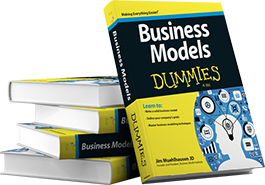Business Model Lessons from Wal-Mart SKU Reductions
Last year, Wal-Mart dramatically reduced the number of products (SKUs) offered at all their stores. This SKU rationalization plan was based upon the premise that consumers wanted clean-looking stores with just the major brands. Known as brand fatigue, the logic was that consumers grew tired of looking at too many brands on the shelf.
Inherent in the rationalization premise was the notion that consumers could be directed to change their brand loyalties to the choices Wal-Mart put in front of them. Effectively, Wal-Mart figured that they controlled the customer’s brand loyalty, not the consumer product company. Wal-Mart figured that once the customer entered the store, the customer had no choice but to buy the items offered.
The plan backfired. Consumers wanted their trusted brands enough to move their entire shopping list to competitors like Target and Dollar General. Wal-Mart then reversed direction and brought back 8500 SKUs per store. This represented an 11% increase in SKUs.
One has to wonder what the logic was for the SKU reduction? Was it:
- Purely economic- trying to squeeze more inventory turns out by reducing the dollar value of goods per store?
- Trend following- did Wal-Mart fall victim to the latest trend of SKU rationalization and overdo it?
- Arrogance- did Wal-Mart feel like consumers would buy whatever brands they put in front of them?
- Trying to be too much like Target- Wal-Mart takes constant heat for ugly stores vs. Target. Was the SKU reduction an attempt to upscale the stores? Who wants a gorgeous store that does not carry the items you want?
- Losing their way- has Wal-Mart forgotten the business model that created the retail powerhouse?
What are the business model lessons for the rest of us?
1) Business model innovations may look great on paper, especially those which reduce costs. However, when business model innovation jeopardizes sales or customer retention, costs savings do not outweigh the negative effects.
2) Don’t underestimate your customer. It has to be difficult not to become arrogant when you are the world’s largest retailer. However, the customer still controls the spend and must constantly be wooed, even if you are Wal-Mart.
3) Know your place in the value chair. Wal-Mart may control the customer once they enter the store, but powerful brands owned by Proctor & Gamble may have greater sway with the customer. If one of your partners can exert significant influence on your customer, either wrestle control back or know your place.
4) Realize that everyone eventually forgets how to think like a customer. This clearly happened to Wal-Mart. Why didn’t someone pipe up and say, “It’s going to tick me off if I go to my local Wal-Mart and cannot find brands I used to find there?” Clearly no one at Wal-Mart was able to correctly think like a customer and avoid this fiasco.
Let’s give Wal-Mart credit for eating a bit of crow and reversing this decision. These big boxes are called Superstores for a reason. Customers expect to find 100% of what they want, not 95%.










